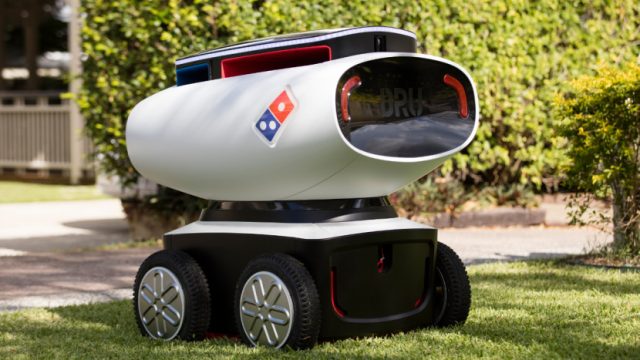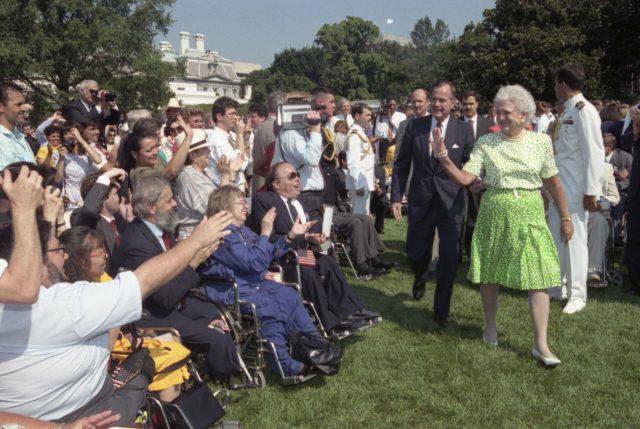

reader comments
269 with 112 posters participating
The US Supreme Court last week formally declined to weigh in on an argument that the Americans with Disabilities Act should not apply to websites and digital storefronts, leaving intact a lower ruling finding that the ADA does, indeed, apply to digital space. Internet and Web users with disabilities, as well as advocates for accessible design, are breathing a sigh of relief.
Accessibility in the digital space has come a great distance in a relatively short time, in many ways opening up the entire digital economy of the 21st century to millions of users. But the fact that one company—Domino’s Pizza—could try taking a case for not making its services accessible to the highest court in 2019 makes clear how much work there is left to do to make the online world equitable, both today and in the future.
So although the Domino’s case has run out of road, the questions it raises still remain: where does the connected world stand today in terms of accessibility? What does the future look like? Why is the law still unclear on all of this? And what’s at stake for any future Domino’s followers?
Domino’s v. Robles
The case the Court declined to hear, Domino’s v Robles, stemmed from a 2016 lawsuit. Guillermo Robles, a blind California resident who uses screen readers to access the Internet, tried to place an order through Domino’s mobile app. Neither the app nor Domino’s website proved usable by a screen reader, and Robles eventually sued the company, arguing the site’s inaccessibility violated his rights under the Americans with Disabilities Act.
The section of the ADA at question is Title III, which says, in part, that you can’t discriminate against an individual on the basis of disability “in the full and equal enjoyment of the goods, services, facilities, privileges, advantages, or accommodations of any place of public accommodation by any person who owns, leases, or operates a place of public accommodation.”
The district court where Robles filed his case dismissed his suit, so he appealed. The 9th Circuit Court of Appeals, in San Francisco, heard the case in 2018 and released its finding for Robles in January of this year.
The 9th Circuit ruling (PDF) did not address whether or not Domino’s app and website were, in fact, compliant with the ADA, kicking that question back to the district court to determine. Rather, the appeals court said only that the app and website should be.
“The alleged inaccessibility of Domino’s website and app impedes access to the goods and services of its physical pizza franchises—which are places of public accommodation,” the court wrote. “This nexus between Domino’s website and app and physical restaurants—which Domino’s does not contest—is critical to our analysis.”
The law already considers brick-and-mortar stores, including pizza-delivery joints, to be places of “public accommodation” under the law—basically, any place such as stores, museums, and schools (but not including private clubs or religious facilities) that are meant to, well, accommodate the public without discrimination.
That determination then extends to digital means of accessing the site, the 9th Circuit said:
Domino’s website and app facilitate access to the goods and services of a place of public accommodation—Domino’s physical restaurants. They are two of the primary (and heavily advertised) means of ordering Domino’s products to be picked up at or delivered from Domino’s restaurants. We agree with the district court in this case—and the many other district courts that have confronted this issue in similar contexts—that the ADA applies to Domino’s website and app, which connect customers to the goods and services of Domino’s physical restaurants.
Unsatisfied, Domino’s tried to appeal the loss to the only remaining authority: the Supreme Court. In July, the company filed a petition (PDF) to the Court asking it to take the case in order to resolve the question:
[Does] Title III of the ADA require a website or mobile phone application that offers goods or services to the public to satisfy discrete accessibility requirements with respect to individuals with disabilities?
Or, in layman’s terms: is a website or an app a “public accommodation” under the law the same way a brick-and-mortar storefront is, therefore making it subject to the same requirements?

The Purpose of the ADA
About 61 million US adults, roughly one in four, live with some kind of disability, according to data from the Centers for Disease Control and Prevention. The point of the ADA is to prevent discrimination against a quarter of the population and to codify the need for reasonable accommodations.
The ADA, like many other millennials, is on the cusp of its 30th birthday. President George H.W. Bush signed it into law in 1990—a time when only 15% of US households even had a computer, let alone access to any kind of Internet connection. Thirty years ago, only a handful of futurists and businesses were predicting the digital revolution that has pretty much completely upended old models of commerce, communication, and connectivity. Today, more than a decade into the smartphone era, we’re realizing the 21st century likely has a whole lot more surprise in store.
Retired Rep. Tony Coehlo, a Democrat who represented California’s 15th district in Congress from 1979-1991, introduced the ADA to the House in May 1989. He now serves on the board of AudioEye, an accessible design firm. As the author of the bill, Coelho firmly believes it applies to digital space.
“I put in the ADA obviously before the Internet came on board,” Coehlo told Ars. “But what we did is, we provided the language that basically said, ‘accommodation for the infrastructure,’ in effect.”
The definition of “infrastructure” has been challenged, and it’s evolved, over time. And so, as digital commerce came along in the subsequent decades, the question became: is the digital sphere part of American infrastructure?
“Of course,” Coehlo said. “It’s just how people communicate, it’s how people get into commerce, it’s how people relate to each other, and so forth. It’s a critical part of our infrastructure! In my view, without reservation, the ADA was not meant to be something that was in place at the time alone. It basically sets the standard for going forward.
“As a result,” he added, “the Internet is part of our national infrastructure, and it’s asked to comply with the law of the land. I have no reservations on that.”
“It’s fundamentally terrifying”
Coelho said he was sure the Domino’s case would be winnable, but he admitted, “It is a fight. And it’s major from the disability point of view. It’s our access to the real world, like everybody else has, and we don’t.”
Designers and advocates in the field were extremely concerned about the stakes and less confident the case, if the Court took it up, could be easily won. Sina Bahram, an inclusive design expert and president of Prime Access Consulting, spoke with Ars at length about both the case and the field.
Over the summer, the figure of $38,000 was circulating online: that’s how much Domino’s had reportedly said it would cost to make the required upgrades to the company’s app. “As somebody who does this kind of work, that seems correct,” Bahram said. “That’s not an outlandish number. It’s not a too-small number. It’s in the ballpark, it’s within the realm of reason. And so what’s frustrating about that is: I do not know the costs associated with appealing something to [the Supreme Court], but I would put hard money that it is greater than $38,000.”
Given the sorts of fees corporate law firms tend to command, Bahram’s bet seems extremely plausible.
“And so the frustration that I and a lot of other people in the community I know have is: this is not some company going ‘we can’t afford to do this,’ or ‘it’s an unreasonable requirement,’ or anything like that,” Bahram said. Yet he says the Domino’s case had potential to “destroy the foundation of Web accessibility for basically 20% of the population.”
“It’s fundamentally terrifying, because if that is a route to make it essentially invalid, then it could invalidate the Web as a place of public accommodation under the ADA. That’s really, really concerning,” Bahram added.
Whitney Quesenbery is a user-experience design expert who in 2013 co-founded the Center for Civic Design, which helps make election and voting design more widely accessible. She has also published several books about inclusive design. And she recognizes this seemingly bizarre decision to legislate rather than update.
“Here’s what’s shocking about Domino’s: like Target [in 2008], just fixing the problem costs a great deal less than suing. So they were suing for the right to discriminate,” Quesenbery told Ars.
Domino’s could have found itself in an entirely different position with a less aggressive attorney, said Lainey Feingold, a disability civil rights lawyer and author of Structured Negotiation: A Winning Alternative to Lawsuits.
“I feel pretty confident the [Supreme] court won’t take it, because there’s really no reason it should,” she predicted, accurately, of the Domino’s case. “It’s terrible that Domino’s is fighting like this. And it’s terrible even to think that—you know, some of these amicus [briefs] say, ‘oh, it could just be a telephone.’ Who but lawyers would ever think a telephone was equal to an accessible website?”


